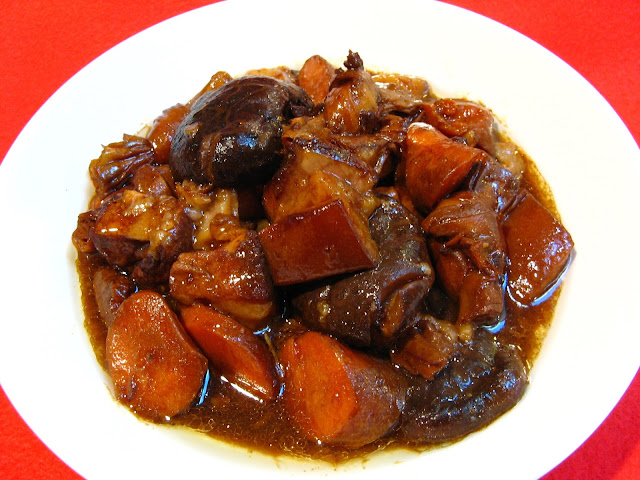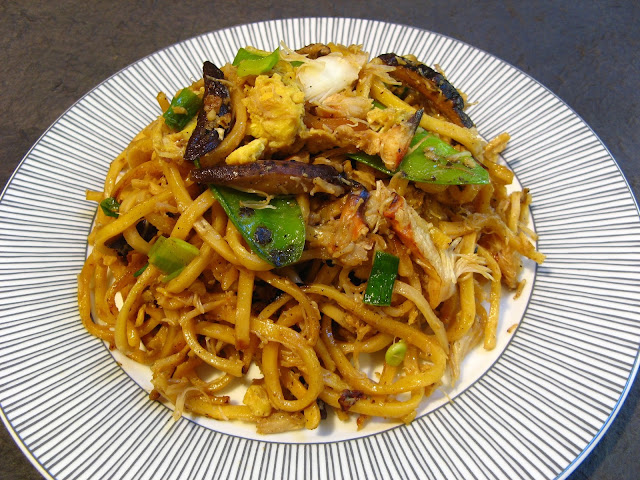The combination
of the dried red Japanese chilies, together with the sweetness of the shrimp
and oyster sauce, makes a great flavor combination. The new ingredient
that I tried in this dish was purchased at my local Mexican market: dried red
Japanese chili peppers, which are similar to the more common Chile de árbol peppers (which have more heat to
them). The dried red Japanese chili peppers aren’t mind numbing hot like the
dried red chilies that you can purchase at your local Asian market. While there
is some heat, the chilies are more flavorful than hot.
I recently went
to a local Chinese restaurant, whose specialties are dishes cooked with chilies
(lots of chilies!). What was interesting about one dish was that there were
handfuls of these red chili peppers in the dish, but you tasted the underlying
flavor of the chili more than any heat. The dish was very spicy without being
hot. So I thought about how to get these chilies, and I knew that they weren’t
available at my local Asian market. I realized that these chilies are available
in bulk at my local Mexican market. I bought a good amount and tried using
dried red Japanese chilies in this dish and got the result I was hoping for.
The translation
of the Japanese chili peppers to Chinese characters is probably not correct. I
appended “Japan” to “dried red chili peppers”, so I would appreciate if someone
could tell me what the correct translation should be.
Enjoy!










